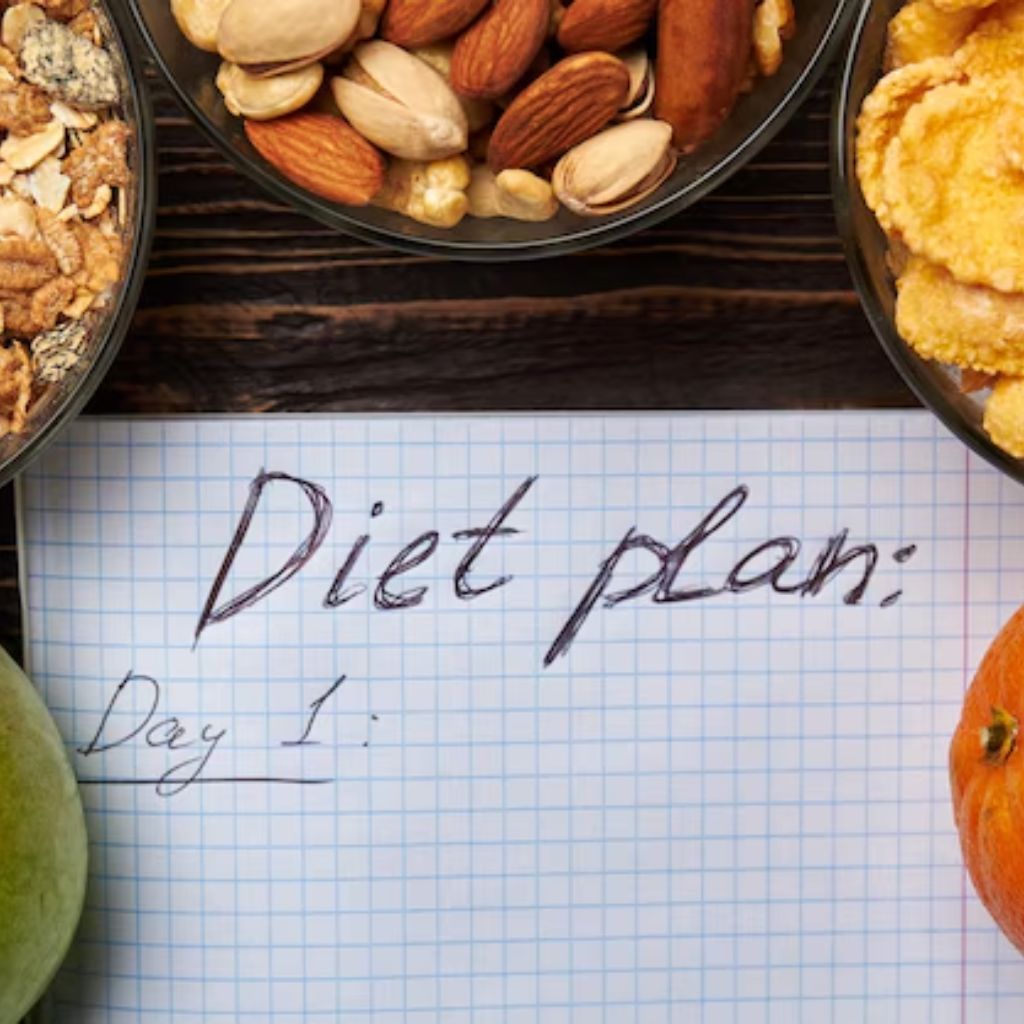Are you looking for a practical, easy-to-follow solution to manage yeast overgrowth? A Candida Diet Plan PDF could be the structured guide you need. Candida overgrowth is a common issue that often hides behind fatigue, skin problems, or digestive discomfort. By adopting a targeted diet plan, you can regain balance, improve gut health, and boost your energy levels.
This comprehensive guide will walk you through everything you need to know about the Candida diet, from understanding symptoms and causes to creating meal plans and using downloadable PDF resources. Whether you’re new to the concept or seeking advanced strategies, this article will help you make confident, informed choices on your journey to wellness.
Understanding Candida Overgrowth
Candida is a type of yeast that naturally exists in your mouth, gut, and skin. In small amounts, it’s harmless and even plays a role in digestion. Problems arise when Candida albicans grows out of control, disrupting the balance of good bacteria in your body. This condition, known as Candida overgrowth, can trigger health issues ranging from digestive problems to mood swings.
Modern lifestyles often fuel this imbalance. High-sugar diets, frequent antibiotic use, and stress can weaken the immune system, allowing Candida to thrive. Left unmanaged, it may lead to chronic fatigue, recurring infections, and skin flare-ups.
The Candida Diet Plan PDF is designed to help you regain balance by cutting off the yeast’s food supply (mainly sugar and refined carbs) while nourishing your body with wholesome, healing foods. With a structured diet plan in hand, you’ll have clear guidance for daily meals, making it easier to stay consistent.
Symptoms of Candida Overgrowth
Recognizing the symptoms early is key to addressing Candida before it becomes a long-term health issue. Candida overgrowth symptoms may vary depending on the individual but often include:
- Digestive problems: bloating, gas, diarrhea, or constipation due to imbalance in gut flora.
- Chronic fatigue: feeling drained despite adequate sleep.
- Skin issues: eczema, rashes, acne, or itchy skin.
- Food sensitivities: reactions to gluten, sugar, or dairy.
- Mood changes: brain fog, irritability, or even mild depression.
Many of these symptoms overlap with other conditions, making Candida tricky to diagnose without testing. That’s why keeping a Candida Diet Plan PDF is useful—it helps you track your food intake, symptoms, and progress.
| Symptom | How the Candida Diet Helps |
|---|---|
| Digestive issues | Restores gut balance with probiotics and fiber-rich foods |
| Fatigue | Reduces sugar crashes and supports steady energy |
| Skin problems | Limits inflammation-triggering foods |
| Food sensitivities | Identifies and eliminates dietary triggers |
By paying attention to these signs, you can decide if adjusting your diet could bring relief.
Causes of Candida Overgrowth
Understanding what causes Candida overgrowth empowers you to make lifestyle changes that prevent it from returning. The most common triggers include:
- Antibiotic use: While antibiotics fight infections, they also kill beneficial gut bacteria, creating space for Candida to multiply.
- High sugar and carb intake: Yeast thrives on sugar, and diets rich in sweets, bread, and pasta accelerate its growth.
- Weak immune system: Stress, illness, or autoimmune conditions lower your defenses, making it easier for Candida to flourish.
- Hormonal imbalances: Shifts in estrogen and progesterone, especially during pregnancy or menstruation, can create favorable conditions for yeast.
- Lifestyle factors: Lack of sleep, high stress, and heavy alcohol consumption also play a role.
The Candida Diet Plan PDF works by addressing these causes through structured meal planning. By removing sugar, strengthening the gut with probiotics, and supporting the immune system with nutrient-dense foods, you’re giving your body the tools it needs to fight back..
What Is the Candida Diet Plan?
The Candida diet is not just another fad diet—it’s a therapeutic approach to healing. At its core, the Candida Diet Plan PDF eliminates foods that feed yeast while emphasizing whole, nutrient-rich ingredients that restore balance.
This diet focuses on:
- Reducing yeast’s fuel source (sugar and refined carbs).
- Supporting gut health with probiotics and fiber.
- Strengthening immunity through vitamins, minerals, and antioxidants.
- Promoting detoxification with hydration and liver-supporting foods.
Unlike restrictive crash diets, this plan is designed for long-term sustainability. It teaches you not only what to avoid but also how to embrace foods that help you thrive.
Key Principles of the Diet
The key principles of the Candida diet plan aim to reduce yeast proliferation and support the body’s healing process.
- Limit Sugar: Restricting sugar intake prevents Candida from thriving, as sugar fuels its growth.
- Incorporate Whole Foods: Prioritize fresh vegetables, lean proteins, and healthy fats. Fresh foods provide essential nutrients while promoting gut health.
- Focus on Probiotics: Include probiotic-rich foods, like yogurt and sauerkraut, to support a healthy microbiome. Probiotics encourage beneficial bacteria growth and aid in digestion.
- Stay Hydrated: Drink plenty of water daily. Hydration helps to flush out toxins and supports overall health.
Foods to Eat and Avoid
Choosing the right foods plays a significant role in your success with the Candida diet plan.
Foods to Eat:
- Leafy Greens: Spinach, kale, and broccoli boost immunity and provide fiber.
- Non-Starchy Vegetables: Cucumbers, bell peppers, and zucchini support digestion without feeding yeast.
- Lean Proteins: Chicken, turkey, and fish offer essential amino acids for repair and growth.
- Healthy Fats: Avocados, nuts, and seeds provide energy and support hormone balance.
- Fermented Foods: Kimchi and kefir introduce beneficial bacteria, improving gut health.
Foods to Avoid:
- Sugary Foods: Cakes, cookies, and candy exacerbate Candida overgrowth.
- Refined Carbs: White bread, pasta, and pastries provide sugars that feed yeast.
- Processed Foods: Packaged snacks often contain preservatives and sugars that disrupt balance.
- Dairy Products: Limit milk and cheese, as they may promote inflammation.
- Alcohol: Alcoholic beverages can affect gut health and weaken the immune system.
Adapting to the Candida diet plan helps you understand which foods support your health and which may lead to imbalances. This understanding equips you to make informed choices that promote wellness and vitality.
Knowing what to eat—and what to skip—is the most important part of this journey.
| Foods to Eat (Support Healing) | Foods to Avoid (Feed Candida) |
|---|---|
| Leafy greens (spinach, kale, arugula) | Sugar (cakes, cookies, candy) |
| Non-starchy veggies (zucchini, cucumber, broccoli) | Refined carbs (white bread, pasta, pastries) |
| Lean proteins (chicken, turkey, fish) | Dairy (milk, cheese) |
| Healthy fats (avocados, nuts, seeds) | Alcohol (beer, wine, spirits) |
| Fermented foods (kimchi, sauerkraut, kefir) | Processed foods (snacks, fast food) |
When followed consistently, these food choices naturally reduce yeast levels and restore balance. A Candida Diet Plan PDF often includes detailed shopping lists, recipe ideas, and substitutions to make this transition smoother.
How to Implement the Candida Diet Plan
Implementing the Candida diet plan involves straightforward steps that help you maximize benefits while minimizing challenges. Focus on meal planning and preparation to ensure adherence and ease.
Meal Planning and Preparation
Start by creating a weekly meal schedule that aligns with the Candida diet plan. Incorporate foods such as leafy greens, non-starchy vegetables, lean meats, fish, eggs, nuts, and seeds. Prepare a shopping list based on your meal plan, selecting fresh, whole ingredients. Cook batch meals to save time during busy weeks.
For instance, roast a variety of vegetables to pair with your proteins or make smoothies using unsweetened almond milk, spinach, and healthy fats like avocado. Prepare easy snacks such as veggie sticks with hummus or nuts to keep you fueled throughout the day. Having healthy options readily available simplifies your choices and keeps cravings at bay.
Tips for Success on the Diet
Stay strong on the Candida diet plan by following key tips. First, set realistic goals and expectations; minor setbacks may happen, but each day is a fresh opportunity to prioritize your health. Second, stay hydrated; drink plenty of water throughout the day to support detoxification and overall wellness. Third, consider keeping a food journal; tracking your meals helps identify which foods work best for your body while also holding you accountable. Fourth, get support from friends, family, or online communities focused on the Candida diet plan.
Sharing experiences and resources with others can boost your motivation and make the journey enjoyable. Lastly, experiment with recipes; creativity in the kitchen makes the Candida diet plan exciting and delicious.
Candida Diet Plan PDF Resources
Discovering effective Candida diet plan PDF resources helps streamline your journey toward managing yeast overgrowth. Quality resources provide essential meal plans, recipes, and shopping lists that align with the Candida diet’s principles.
Where to Find Reliable PDFs
Finding reliable Candida diet plan PDFs is crucial for accurate information and guidance. Explore reputable websites such as nutrition and health organizations, blogs by nutritionists, and dedicated Candida diet resources. Check online platforms like government health sites, peer-reviewed journals, and well-known health blogs.
Engaging with community forums offers personal recommendations and insights, leading you to trustworthy resources. Online marketplaces also feature eBooks authored by experts, offering comprehensive guides on navigating the Candida diet.
Benefits of Using a PDF Guide
Using a Candida diet plan PDF guide presents numerous benefits. First, PDFs are easily accessible on various devices, allowing you to reference them anytime, anywhere. They often provide structured meal plans, making it simpler to structure your daily eating habits. PDF guides commonly include shopping lists for compliant foods, saving you time during grocery trips.
Additionally, many PDF resources feature tips for meal preparation that enhance efficiency in the kitchen. With visual elements like charts and checklists, these guides help reinforce your commitment to the diet. Adapting to the Candida diet becomes straightforward and enjoyable with these benefits at your fingertips.
Conclusion
Embracing the Candida diet plan can be a game-changer for your health and vitality. By focusing on whole foods and avoiding sugar, you’re setting yourself up for success in managing yeast overgrowth. With the right resources like a Candida diet plan PDF at your fingertips, meal planning becomes a breeze.
You’ll discover new delicious recipes and easy shopping lists that make sticking to the plan enjoyable. Remember to celebrate your progress and stay connected with supportive communities. Taking these steps not only helps you combat Candida but also empowers you to take charge of your overall well-being. Get ready to feel energized and revitalized as you embark on this exciting journey!
Frequently Asked Questions
What is a Candida diet plan?
The Candida diet plan is a dietary approach aimed at managing yeast overgrowth, specifically caused by excess Candida albicans. It encourages the consumption of fresh, whole foods while avoiding sugar and processed ingredients. This plan helps restore balance in the body and improves overall health.
What are the symptoms of Candida overgrowth?
Common symptoms of Candida overgrowth include digestive issues, fatigue, skin irritations, food sensitivities, and mood swings. Recognizing these symptoms can help individuals understand if they may need to consider dietary changes.
What foods can I eat on a Candida diet?
On a Candida diet, you should focus on eating leafy greens, non-starchy vegetables, lean proteins, healthy fats, and fermented foods. These foods help nourish the body while keeping yeast levels in check.
What foods should I avoid on a Candida diet?
Avoid sugary foods, refined carbohydrates, processed foods, dairy products, and alcohol on a Candida diet. These foods can promote yeast overgrowth and hinder your recovery efforts.
How do I plan meals for a Candida diet?
To plan meals for a Candida diet, create a weekly schedule with compliant foods, develop a shopping list of fresh ingredients, and consider batch cooking. Having healthy snacks readily available can also make it easier to stick to the diet.
Why is hydration important on a Candida diet?
Staying hydrated is crucial on a Candida diet as it supports overall health, aids digestion, and helps eliminate toxins from the body. Proper hydration can also alleviate some symptoms related to Candida overgrowth.
Where can I find Candida diet plan resources?
You can find reliable Candida diet plan resources in PDF format on reputable websites, nutrition blogs, and community forums. These resources often include meal plans, recipes, and shopping lists to help guide your journey.
How can a food journal help on a Candida diet?
Keeping a food journal can help you track your meals, symptoms, and progress on the Candida diet. This practice allows you to identify which foods work for you and helps you stay accountable to your dietary goals.


